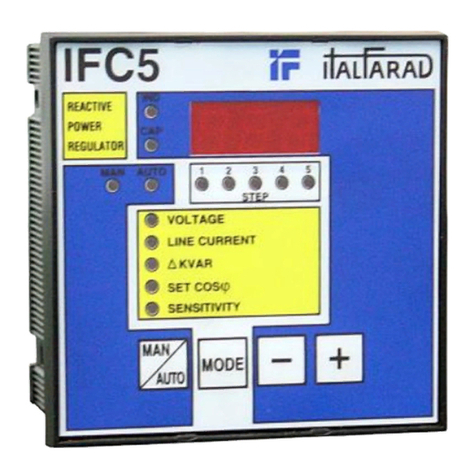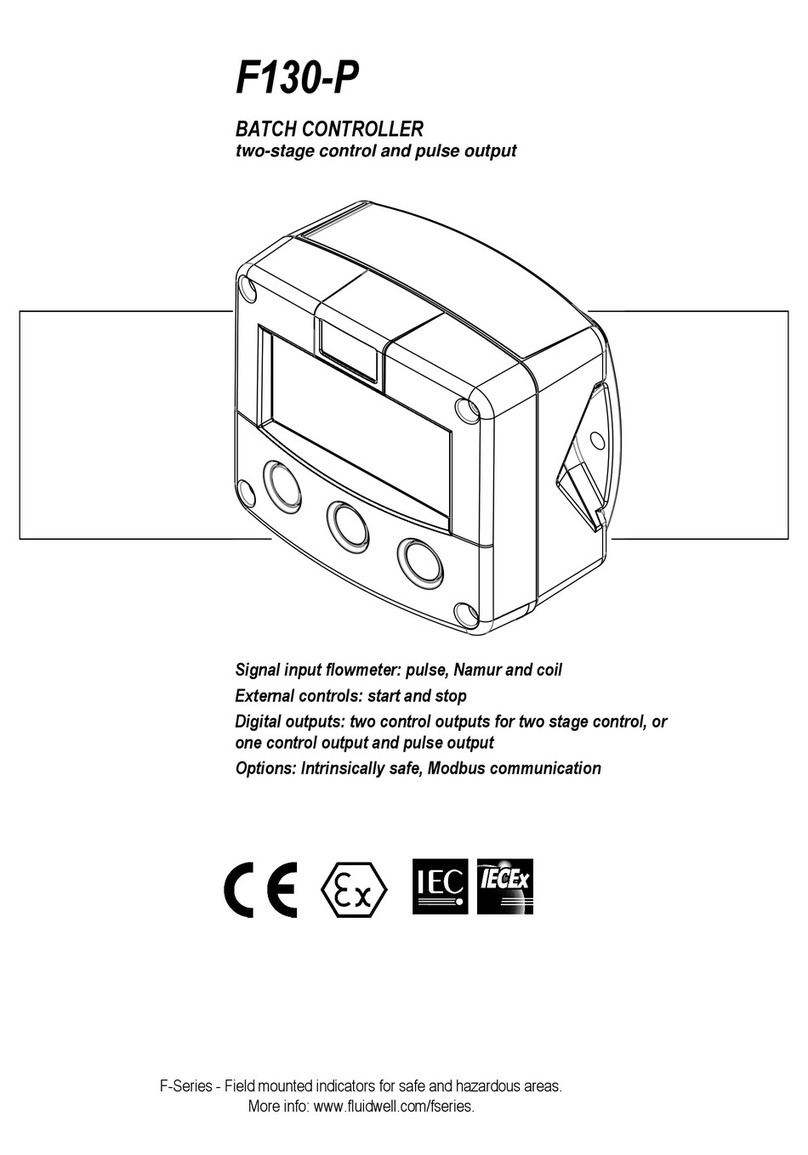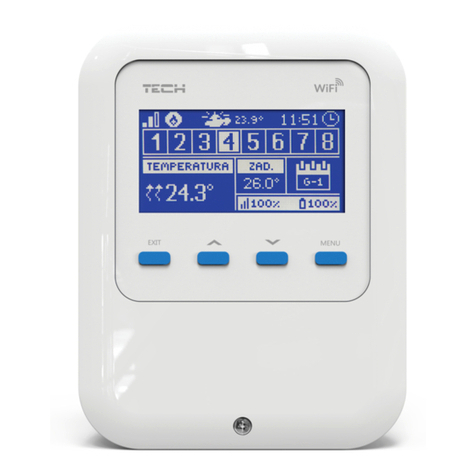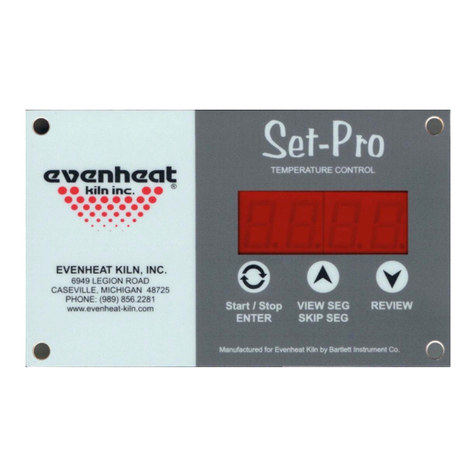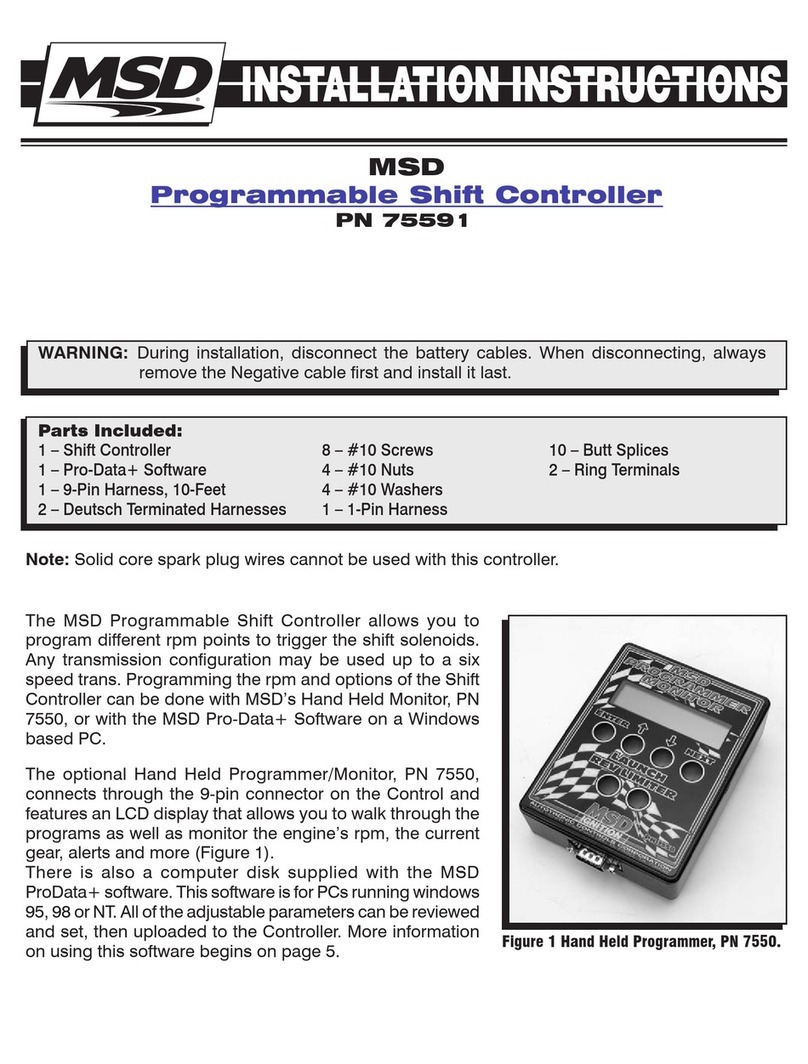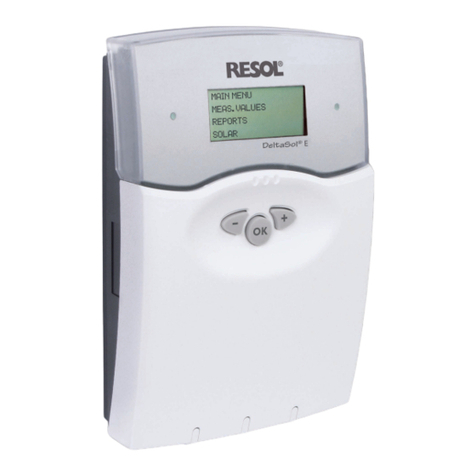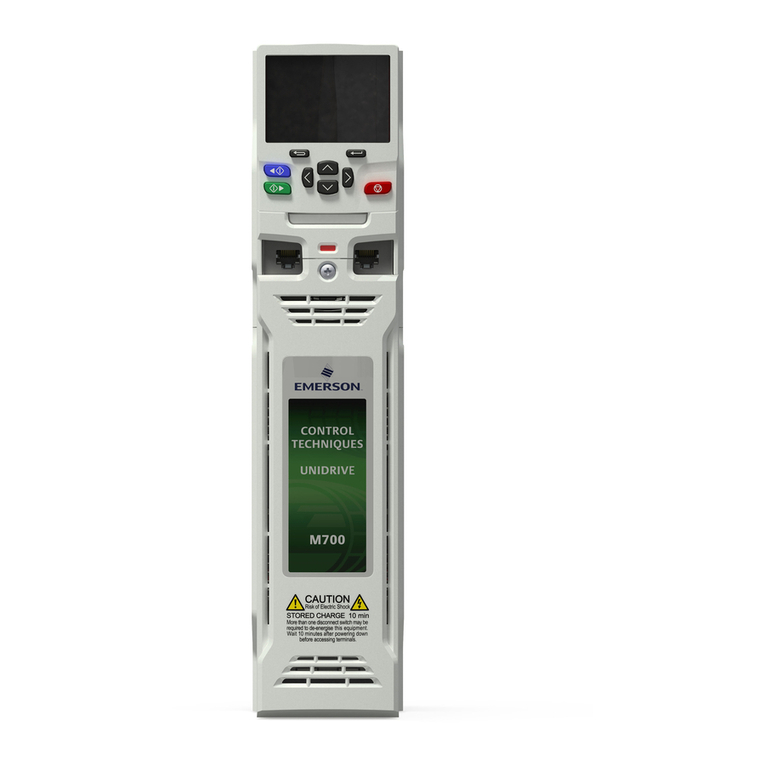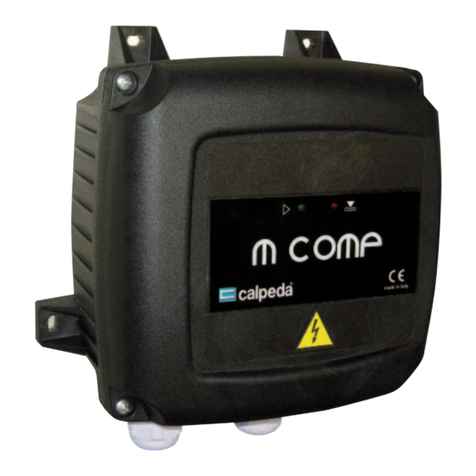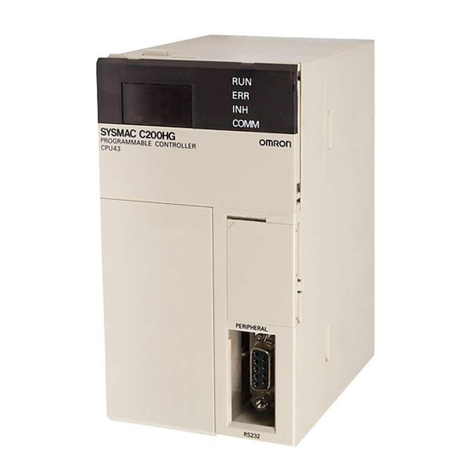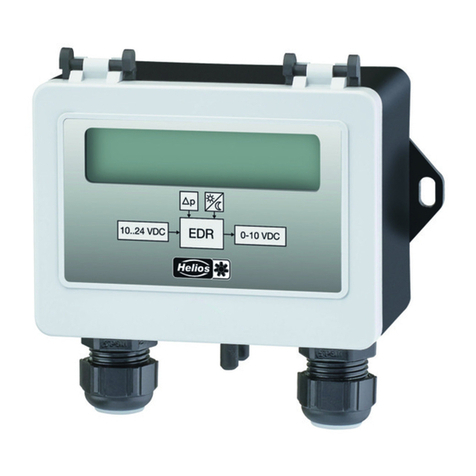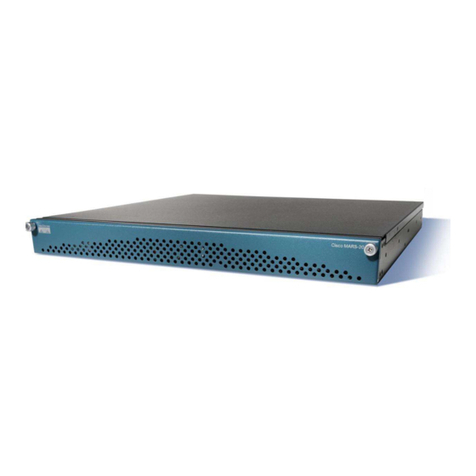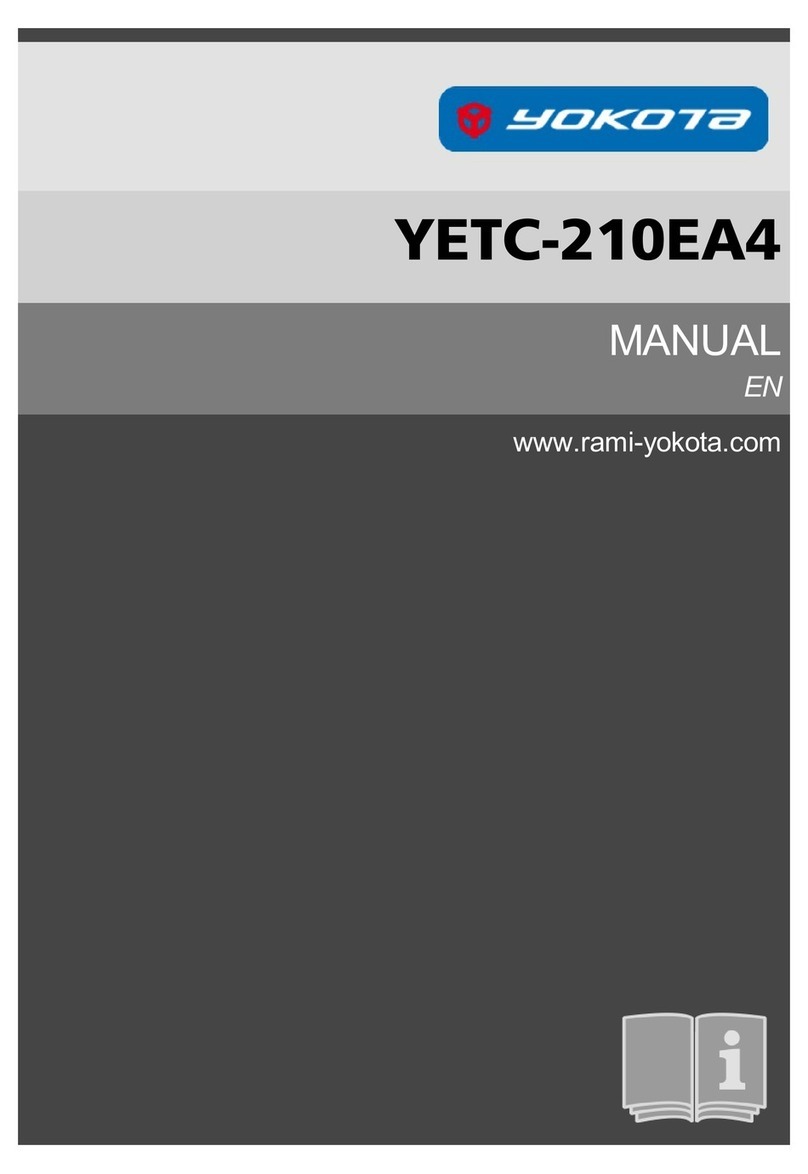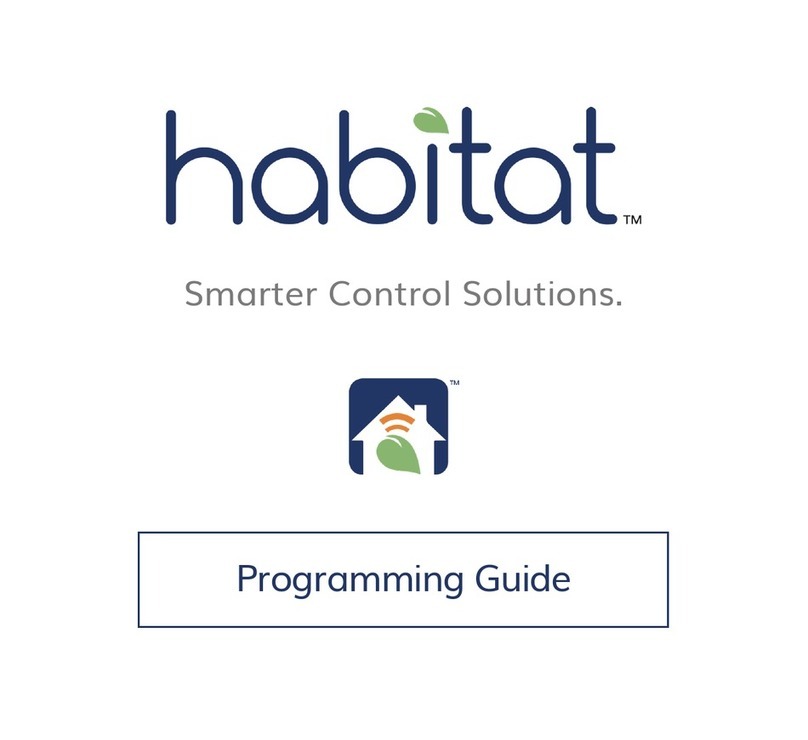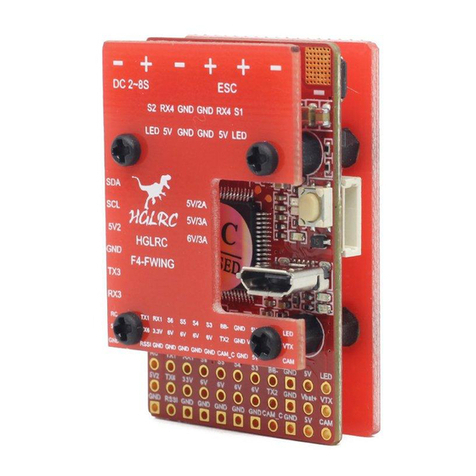TEI FDC-3 User manual

••
FDC·3
li-
CARD USER'S GUIDE
..
Et

FDC-3
FLOPPY-DISK
CONTROLLER
USER
MANUAL

CON
TEN
T
IIKTRODUCTION
1.1
General
1.2
Physical
Description
II
INSTALLATION
III
THEORY
OF
OPERATION
3.1
Address
Decoder
3.2
Drive-Select
Latch
3.3
Function-Select
Logic
3.4
Bidirectional
Bus
Buffers
3.5
Read/Write
Clock
Generation
3.6
1791
Controller
3.7
Miscellaneous
Logic
3.8
Jumper
Selection
of
Various
Functions
IV
SOFTWARE
CONSIDERATIONS
4.1
FDC-3
Card
4.2
1791
Device
V
HARDWARE
CONSIDERATIO~S
5.1
Drive
Configuration
5.2
Signal-Cable
Connections
VI
USER
REPAIR GUIDE
1-1
1-1
2-1
3-1
3-1
3-1
3-1
3-3
3-5
3-7
3-9
4-1
4-1
5-1
5-1
6-1
A
TEl,
A.l
A.2
A.3
INC.
T/DOS DISKETTE READ/WRITE
ERROR
INDICATIONS
General
Commands
Error-Recovery
Procedures
FIG
U
RES
A-I
A-I
P.-4
1-1
TEl,
Inc.
FDC-3
Floppy-Disk
Controller
3-1
FDC-3
Card
Block
Diagram
3-2
1791
Device
Block
Diagram
3-3
FDC-3
Card
Address
Jumper
Selection
3-4
Drive-Ready
Delay
Jumper
Selection
6-1
Card
Ejector,
Left
SidE
TAB
L E S
5-1
Regular
Drive
Signal
Connections
5-2
Miniature
Drive
Signal
Connections
A-I
Type
ICommand
Codes
A-2
Type
II
Command
Codes
A-3
Type
III
Command
Codes
1-0
3-0
3-4
3-8
3-10
6-0
5-2
5-3
A-I
A~2
A-2
i

..
"
g
•
..
-
,
-
•
..
-
-
•
•
..
-
~
,
c
••
•
..
o
g
..
•
o
-
-
Q
•

SECTION
I
INTRODUCTION
1.1
GENERAL
The
TEl,
Inc.
FDC-3
Floppy-Disk
Controller
combines
the
1791
LSI
floppy-disk
controller
device
and
supporting
logic
to
control
up
to
eight
standard
drives
and
up
to
three
mini
drives
-
single
or
double-
sided,
single
or
double
density.
The
1791
device
allows
software
selection
of
both
density
and
number
of
sides
for
ease
in
changing
system
conf
iguration.
The
FDC-3
Floppy-Disk
compatible
formats;
automatic
track-seek
detection.
Controller
also
effers
such
features
as
IBM-
buffered
control,
data,
and
status
lines,
with
verification;
and
CRC
generation
and
The
TEl,
Inc.
FDC-3
Floppy-Disk
Controller
was
specifically
designed
to
operate
reliably
in
a
TEl,
Inc.
ComFuter
System
using
TEl,
Inc.
system
components.
Although
the
FDC-3
Floppy-Disk
Controller
may work
properly
in
another
manufacturer's
computer,
or
with
another
manufacturer's
components,
TEl,
Inc.
cannot
guarantee
that
it
will
do
so.
1.2
PHYSICAL
DESCRIPTION
The
FDC-3
Controller
card
(Figure
1-1)
consists
of
31
integratec
circuits,
plus
supporting
components;
50-pin
socket
for
standard
(8")
diskette-drive
signal
cable;
and
a
34-pin
socket
for
miniature
(5.25")
drive
signal
cable;
all
mounted
on
a
5"
x
10"
(127-mm
x254-mill)
fiberglass
double-sided
etched-circuit
board
complete
with
a
standard
S-IOO
bus
connector
that
has
gold-plated
contacts
for
reliability
and
long
life.
1-1

SECTION
II
INSTALLATIOK
1)
Turn
System
power
off.
CAUTION!
NEVER
INSTALL
OR
REMOVE
ACIRCUIT
CARD
WITH
POWER
ON!
2)
Install
card
in
any
card
slot.
If
the
FDC-3
card
replaces
an
FDC-
2
card,
install
in
same
slot
to
avoid
having
to
move
cables.
Note
that
the
edge-connector
location
prevents
plugging
the
card
in
backwards.
3)
Plug
signal
cable(s)
into
FDC-3
card.
Cable
from
standard
(8")
drive(s)
plugs
into
large
connector.
Cable
from
miniature
(5.25")
drive(s)
plugs
into
small
connector.
Be
sure
connector
(s)
firmly
seated.
4)
Turn
System
on,
with
all
drive
doors
open.
If
T/DOS
Version
1.44
(or
lower)
information
appears
(after
CRT
warmup)
with
drive
doors
open,
FDC-3
card
will
not
work
properly.
5)
Place
System
diskette(l)
in
drive
A(2),
close
drive
door,
wait
for
memory-size
prompt,
then
enter
size
(in
K)
for
desired
program,
or
press
RETURN
to
load
maximum
size
automatically.
6)
Check
CRT
Display.
If
T/DOS
Version
2.0
(or
higher)
installed,
System
is
ready
for
operation.
(1)
Consult
local
documentation,
Supervisor,
or
Dealer
for
correct
diskette
insertion
method
on
your
System.
Diskette
should
not
be
Wr
i
te-Protected,
if
recording
on
disk
et
te
requi
red.
(2)TEI,
Inc.
Systems
with
eight
function
keys
on
keyboard,
can
load
T/DOS
Version
2.0
(or
higher)
from
drives
B,
C,
or
D,
if
desired.
Press
key
8
to
load
from
drive
B,
key
7
to
load
from
drive
C,
keys
7
and
8
to
load
from
drive
D.
2-1

DRIVE
a
Dr
ive
#
/Datil
Reset
....
i'
Read/Write
Drive-Select
~
,-
1791
v
Clk
Clock
Raw
Dat
Latch
i'
Generator
v
Rd
Clk
i'
Earlv
-
~
..
Lat0
-
Do
Bid
i
rectional
/
Dal
....
Write
Data
....
DI
Buss
Driver
......
,-
::.
Write
Gate
Di
rect
ion
~
"
Step
....
Head
Load
"
'/
Head
Loadedl
Delay
1
......
Address
"
A2-A7
---
,
Write
Fault
~
Decoder
A2
'/
F
I'
-----0
I . /
Write
Protect
MatrIx
G
Index
Pulse
AD.
Al
.....
......
".
1/
Ready
I
......
I
Delav
SINP
R/W
.....
SOUT
Function
".
1/
Track.
0
PD
BIN
Select
PWR
Logic
Figure
3-1
FDC-3
Floppy-Disk
Controller
Card
Block
Diagram

SECTION
III
THEORY
OF
OPERATION
The
TEl,
Inc.
FDC-3
Floppy-Disk
Controller
Card
(Figure
3-1)
contains
an
Address
Decoder,
Drive-Select
Latch,
Function-Select
Latch,
Bidirectional
Bus
Buffers,
crystal-controlled
Read/Write
Clock
Generator
with
Digital
phase-Locked
loop,
type
1791
MOS
LSI
controller,
and
miscellaneous
logic.
3.1
ADDRESS
DECODER
The
basic
FDC-3
address
is
XXOY
to
XXFY
(hex)
where
xx
is
"don't-care"
(high-order
address
byte
not
decoded
on
FDC-3
card),
0
to
F
is
jumper-
selected
on
the
FDC-3
card,
and
Y
is
partly
jumpered
and
partly
software-controlled
to
direct
the
accompa~ying
data
byte
to
the
proper
card
or
1791
device
register
(Section
3.6).
Comparator
Z26
and
gates
in
Z24
and
Z25
form
the
FDC-3
address
decoder.
The
three-row
by
five-column
matrix
between
Z26
and
the
card
edge
enables
the
jumper
selection
described
above
(and
in
Section
3.8)
•
When
the
CPU
sends
date.
to
the
address
Lelected
by
the
jumpers,
the
Address
Decoder
enables
the
card
to
receive
or
transmit
data.
3.2
DRIVE-SELECT
LATCH
Z30
and
gates
in
Z24
and
Z25
form
an
eight-bit
latch
for
the
selected
drive
numbers,
type
(mini
or
standard),
side
number,
density,
and
reset.
Data
on
the
data
bus
(low
order
byte
with
TEl,
Inc.
CPU-85
card)
enters
the
latch
when
the
operating
system
executes
an
OUT
instruction
to
the
FDC-3
address,
with
address
bit
A2
high.
Bits
Al
and
AO
are
ignored.
3.3
FUNCTION-SELECT LOGIC
Ga
tes
in
Z
9,
Z24
and
Z25
decode
CPU
commands
to
the
FDC-3
to
steer
or
condition
onboard
logic
to
receive
or
transmit
the
proper
data.
3.4
BIDIRECTIONAL
BUS
BUFFERS
Z28
and
Z29
are
four-bic
bidirectional
bus
driver/receivers.
3-1

3.5
READ/WRITE
CLOCK
GENERATION
The
Read/Write
Clock
Generator
performs
the
dual
function
of
(1)
Accurately
separating
incoming
data
and
clocks
in
either
FM
mode
(single
density)
or
MFH
mode
(double
density);
and
(2)
Supplying
write
clocks
for
either
recording
mode.
This
logic
consists
of
a
crystal-controlled
Oscillator,
Dividers,
Write-Data
Delay
Generator,
multiplexer-controlled
Buffers,
and
Digital
Phase-Locked
Loop.
3.5.1
OSCILLATOR
R24,
R25,
Xl,
and
two
sections
of
Z16
form
a
16-~Hz
oscillator.
The
oscillator
output
clocks
the
Divider
log~c.
3.5.2
DIVIDERS
AND
MULTIPLEXED
BUFFER
Z12
divides
the
16-MHz
oscillator
signal
to
generate
2,
4
and
8
MHz.
Z14
enables
cne
of
the
four
buffers
in
Z13,
steered
by
density
ana
drive
signals.
The
selected
buffer
passe~
the
selected
frequency
--2,
4,
8,
or
16
MHz--
to
the
Digital
Phase-Lc'cked
Loop.
3.5.3
WRITE-DA'I'A
DELAY
GENERATOR
AND
BUFFER
Z5
delays
the
Write
Data
signal
one,
three
or
five
16-MHz
clock
times
as
required
for
write
precompensation.
Z14
enables
one
of
the
four
buffers
in
Z6,
steered
by
Early
and
Late
outputs
from
the
1791
device.
3.5.4
DIGITAL
PHASE-LOCKED
LOOP
Zl,
Z2,
Z4,
ZlO,
211
and
Z16
form
a
Digital
Phase-Locked
loop.
This
circuit
receives
combined
data
and
clock
transitions
from
the
drive
electronics
and
accurately
separates
the
clock
pulses
from
the
data
pulses.
ZIA
and
Z2A
clock.
Z2B
transition.
Clock.
synchronize
incoming
signal
transitions
with
the
FDC-3
and
gates
in
Z10
output
short
pulses
for
each
input
These
pulses
clock
Zll
and
Z4
which
output
the
Read
ZlB,
Z2B,
and
buffers
in
Z16
and
Z17
sel~ct
the
1791
device
clock.
3-3

~----,-----t
+
0.,.
...
OUT
ttuHERS
-,
t+r1
It•1•
DATA
,-,r)-"'~'A·~('
r
SECiOA
~I
r-
TRACt(
K-
$TATUS
MEG
FlE(~
REG REG REG
•iI
,
d;
I
.::;
......
i
L--
MAW
READ
51.11'
r
__
EG
:
:IAcU
W~~EO~S~T"
4-
!
1-1--
I,
..
~
OPEC'OR
:,
ReL.IC.
i
rl,---C_""
'_0uc_ll---·
-----J
~':'.Q---r-----I
-_
....
_----
--~._--
--~--
__
we
__
--~':.._-
--~-
ro,
N1;:"u'i'4
·,,"'ftlFACf
(O",,"'F:lO
..
P,
•
WG
r043
;;mo
-
WP
"
-
r.3a
O'$IC.
REAO'"
I",TEAF·CT
CO""TIlIO~
STEP
DIllie
EARLY
LoAT!,
MG
",0
'"
T
FD1791 BLOCK DIAGRAM
Figure
3-2
1791
Device
Block
Diagraffi
~-4

3.6
1791
CONTROLLER
The
1791
Controller
is
an
r~os
LSI
device
that
contains
logic
to
select
a
disk
track,
then
reco!o
data
on
that
track
or
read
data
already
recorded.
The
1791
device
(Figure
3-2)
consists
cf
a
buffered
Data
Register,
Data
Shift
Register,
Sector
Register,
Command
Register,
Track-Number
Register,
Status
Register,
CRC
Logic,
Address-Detect
Logic
Arithmetic/Logic
Unit
(ALU),
Computer-Interface
Logic,
and
Drive-
Interface
Logic.
3.6.1
DATA
REGISTER
This
bidirectional
register
receives
data
or
commands
from
the
CPU
and
transmits
data
to
the
CPU.
3.6.2
DATA
SHIF7
REGISTER
This
register
receives
eignt
bits
of
serial
data
from
the
drive,
then
outputs
it
as
one
byte
to
the
Dcta
Regis~er;
or
receives
a
byte
from
the
Data
Register
and
transmits
it
as
serial
data
to
the
drive.
3.6.3
SECTOR
REGISTER
This
eight-bit
register
holes
the
address
of
the
desired
sector.
3.6.4
COMMAND
REGISTER
This
eight-bit
register
holds
the
command
currently
being
executed
by
the
1791
device.
The
device
has
11
cOffiffiands
of
four
types
(Section
IV)
•
3.6.5
TRACK-NUMBER
REGISTER
This
eight-bit
register
holds
the
number
of
the
track
over
which
the
Read/Write
head
is
currently
positioned.
Step
and
Direction
commands
from
the
Drive-Interface
logic
increment
or
decrement
the
register.
3.6.6
STA?US
REGISTER
This
eight-bit
register
holds
drive
status
such
as
ready,
write-
protected,
etc.;
and
coremand-result
status.
Refer
to
Appendix
A.
3-5

3.6.7
CRC
LOGIC
Thi~
logic
generates
a
unique
16-bi
t
chec.(-word
for
each
data
transfer
[rolil
the: CPU,
and
records
that
word
along
with
the
data.
When
the
date..
is
read
out,
it
again
passes
through
the
CRC
logic.
If
the
check-word
generated
during
the
read
operation
does
not
match
the
recorded
check-
word,
the
1791
device
enters
a
CRC
error
bit
in
its
Status
register
and
stops
the
Read
operation.
3.6.8
ADDRESS-DETECT
LOGIC
This
logic
detects
ID,
dat~,
or
index
marks
during
operation.
3.6.9
ARITHNETIC/LOGIC
UNIT
The
ALU
increments
or
decrements
registers
as
required.
3.6.10
COMPUTER-INTERFACE
AND
;)RIVE-INT::RFACE
LOGIC
The
Computer-Interface
logic
rec2ives
all
control
signals
from
the
CPU
and
selects
register
data
flow
accordingly.
The
Drive-Interface
logic
processEs
status
signals
f~om
the
disk
drive
and
control
signals
from
the
Computer-Interface
logic
to
control
data
transfer
to
and
from
the
drive.
A
Prograremed
Logic
Array
(PLN
stores
the
program
that
controls
both
the
Computer-Interfac~
and
Drive-Interface
logic
blocks.
3.7
3.7.1
MISCELLANEOUS
LOGIC
HEAD-LOAD
DELAY
Z21
generates
a
noninal
40-millisecond
delay
pulse,
timed
by
C18
a,.c.
R5,
each
time
the
1791
device
generates
the
Head-Load
signal.
This
pulse
applied
to
the
1791
device's
HLT
input
prevents
any
transfer
until
the
drive
head
settles
on
the
diskette
surface.
3.7.2
DRIVE-READY
LOGIC
3.7.2.1
Miniature
Drive
Z20
counts
index
pulses
generated
by
the
drive
electronics
each
time
the
diskette
index-hole
passes
a
sensor
in
the
drive.
Upon
reaching
the
desired
number
(Section
1.<;);
Z20
outputs
a
RDY
signal
for
the
1791
device.
3-7

3.7.2.2
Regular
Drive
The
drive
electronics
generates
RDY/ or.
interface
connector
pin
22
upon
detection
of
the
second
index
pulse
after
drive
door
closed.
Z26-4
A3
*
Z26-6
A4
*
Z26-10
AS
*
Z26-12
A6
*
Z26-14
A7
*
Ground
+5
VDC
\
1 I I 1 I
*-----------*-----------*-----------*-----------*
I
1
I
*-----------*-----------*-----------*-----------*/
Figure
3-3
FDC-3
Card
Address
Jumpering,
Wiring
Side
of
Card
Up
TABLE
3-2
FDC-3
ADDRESS
JUMPER SELECTION
===================================
I I
A7
I
A6
I
AS
1
A4
I
1-----1------1------1------1------1
o
1
2
3
4
5
6
7
8
9
A
B
C
D
E
F
o
c
o
o
o
o
o
o
1
1
1
1
1
1
1
1
o
o
o
o
1
1
1
1
o
o
o
o
1
1
1
1
J
o
1
1
a
)
1
1
oJ
o
1
1
o
a
1
1
o
1
a
1
a
1
o
1
o
1
a
1
o
1
a
1
===================================
*If
A3
strapped
high,
the
low
order
address
byte
varies
from
8
to
F;
if
low,
from
0-7.
3-8

3.8
JUMPER
SELECTION
OF
VARIOUS
FUNCTIONS
The
FDC-3
card
has
jumper
selection
for
address,
interrupts,
drive-
ready
delay,
and
Write
Fault.
The FDC-3
card
leaves
the
factory
with
etched
jumpers
selecting
these
functions
for
proper
operation
with
the
TEl,
Inc.
Disk
Operating
System
(T/DOS).
Changing
any
of
these
jumpers
may
result
in
improper
T/DOS
operation.
3.8.1
FDC-3
ADDRESS
Recall
from
SectiCin
3.1
that
the
basic
FDC-3
address
is
XXOY
to
XXFY
(hex).
Jumpers
insE::rted
in
the
matrix
between
Z26
and
the
card
edge
connector
(Figure
3-3)
and
the
System
software
determine
the
specific
FDC-3
address,
OY
to
FY.
The
card
leaves
the
factory
wtl
A7
conn
~cted
to
+5
VDC
<logic
1>
and
A6-A3
connected
to
ground
(logic
0).
This
forms
address
8X,
where
X
consists
of
A3
at
logic
0
and
A2
-
AO
software-selected
from
0-7,
which
results
in
a
final
address
of
80
to
87.
To
select
a
different
address,
refer
~o
Table
3-2,
determine
the
address
connection,
c~refully
cut
the
factory
jumpers
to
Z26
(as
required),
then
solder
jumpers
from
thE
+5VDC
or
ground
rows
to
the
226
inputs.
3.8.2
END-OF-COMMAND
INTERRUPT
with
the
etched
jumper
just
above
5-100
bus
pin
9
intact,
the
1791
device
generates
a
VISI
interrupt
signal
~t
the
end
of
each
command.
3.8.3
DATA
REQUEST
INTERRUPT
With
the
etched
jumper
just
above
pin
10
intact,
the
1791
devicE::
generates
aVI61
(Data
Request)
interrupt
signal
if
(1)
Data
Register
full
during
Read,
or
(2)
Data
Register
enpty
during
vlrite.
3.8.4
WRI'::'E
FAUL'I'
If
thE::
user's
drive
supplies
a
Write-Fault
signal
(WF/),
connecting
a
jumper
between
points
"H"
and
"F"
below
the
large
signal-cable
connector
causes
the
1791
device
to
stop
the
Write
operation
and
set
the
Write-Fault
status
bit
upon
detectio~
of
the
Fault
signal.
3-9

3.8.5
DRIVE-READY
DELAY
SELECTION
with
the
etched
jumper
(on
back
side
of
board)
connected
to
Z20,
pin
11
(Figure
3-4),
the
1791
device
receives
a
Ready
signal
after
the
sixth
diskette
rotation
(sixth
index
pulse
received).
To
select
the
fifth,
seventh,
or
eighth
rotation
instead,
turn
the
board
wiring
side
up,
locate
the
group
of
empty
holes
shown
in
detail
(as
asterisks)
in
Figure
3-4
(approximately
3n
(7.5
cm)
straight
down
from
left
edge
of
large
signal
connector),
cut
the
etched
jumper,
then
solder
a
jumper
from
the
single
hole
to
the
hole
above
pin
10
for
selection
of
the
fifth
rotation,
to
the
hole
above
pin
12
for
selection
of
the
seventh
rotation,
or
to
the
hole
above
pin
13
for
selection
of
the
eighth
rotation.
o0
Z20
o0
*
/
/
-------Etched
jumper
****
IIII
0000 0
10 11
12
13
0000 0
Figure
3-4
Drive-Ready
Delay
Jumper
Selection,
Wiring
Side
3-10

SECTION
IV
SOFTWARE
CONSIDERATIONS
4.1
FDC-3
CARD
The
FDC-3
card
requires
three
programming
steps:
Drive
Selection,
Drive
Initialization,
and
Data
Transfer.
The
TEl,
Inc.
Operating
System,
T/DOS
Version
2.0
(or
higher),
performs
these
functions
as
required
for
program
operation.
Note
that
T/DOS
Versions
2.0
-
2.XX
support
amaximum
of
four
diskette
drives.
4.2
1791
DEVICE
The
1791
LSI
device
responds
to
11
commands
of
four
types.
Type
I
cowmands
cause
hea.d
anG/or
stepper
motor
action.
Type
II
commands
read
or
write
data
fromlto
a
selected
sector.
Type
III
commands
read
an
address
or
data
fron,
i:l.
track
or
write
data
onto
a
trock.
The
single
Type
IV command
controls
the
device's
interrupt
capabilities.
As
stated
for
the
FDC-3
card,
T/DOS
supplies
these
commands
as
needed
for
program
operation.
Refer
to
Appenaix
A
for
a
discussion
oE
1791
device
commonds
ana
stc:.tus
codes.
4-1

SECTION V
HARDWARE
CONSIDERATIONS
5.1
DRIVE
CONFIGURATION
Each
drive
in
a
TEl,
Inc.
Computer
System
must
be
physically
configured
according
to
its
System
designation.
Configuration
occurs
during
System
checkout.
Drive
selection
during
program
operation
is
software-controlled.
5.2
5.2.]
SIGNAL-CABLE
CONNECTIONS
REGULJl.R
DRIVES
Table
5-1
sho\Vs
signal
connections
tor
regular
drives
<large
connector).
5.2.2
MINIATURE
DRIVES
Table
5-2
sr,ows
signal
connee
tions
f(
r
miniaL.
re
driveE
(small
connector).
5-1

TABLE
5-1
REGULAR
DRIVE
SIGNAL
CO~NECTIONS
==========================================================
I
Pin
I
FUNCTION
I
Pin
I
FUNCTION
I
1-------1--------------
1-------1------------------------1
1
2
3
4
5
6
7
8
9
10
11
12
13
14
15
16
17
18
19
20
21
22
23
24
25
I
Ground
I
Spare
1
Ground
I
Write
Fault
I
Ground
I
Track
44-76
1
Ground
I
Spare
1
Ground
I
Spare
1
Ground
INot Used
I
Ground
I
Side
Select
I
Ground
I
In
Use*
I
Ground
IHead Load
I
Ground
I
Index
I
Ground
I
Ready
1
Ground
I
Spare
I
Ground
26
27
28
29
30
31
32
33
34
35
36
37
38
39
40
41
42
43
44
45
46
47
48
49
50
Enable
Drive
Select
11
Ground
I
Drive
Select
2 1
Ground
I
Drive
Select
3 I
Ground
I
Drive
Select
4 1
Ground
I
Direction
1
Ground
I
St2P
I
Ground
I
Write
Data
I
Ground
I
Write
Gate
I
Ground
I
Spare
I
Ground
I
Write
Protect
I
Ground
I
Raw
Data
I
Ground
I
Separated
Data
I
Ground
j
Se?arated
Clock
I
5-2
==============================================~=======
=====
*Door
Light

TABLE
5-2
XINIATURE
DRIVE
SIGNAL
'::ONNECTION
===================================:=====================
Pin
1
FUNCTION
I I
Pin
1
FUNCTION
I
-------1----------------1
1-------1--------------------1
1
IGrouna
I I
18
I
Direction
2
ISpare
1I
19
I
Ground
3IGround II
20
I
Step
4
ISpare
I I
21
I
Ground
5IGround I
22
I
write
Data
6
ISpare
1
23
I
Ground
7IGround I
24
1
Write
Gate
8
IInd~x
1
25
I
Ground
9IGround I
26
1
Track
0
10
IDr i
ve
1
Select
I27 1
Ground
11
IGround I
28
1
vir
i
te
Protect
12
IDrive
2
Select
I
29
I
Ground
13
IGrounCi I
30
I
Raw
Data
14
IDrive
3
Select
I
31
I
Ground
15
IGrounci I
32
I
Side
Select
16
IHotor
On
I
33
IGround
17
IGroun(; I
34
I
=======~===;======.===~=;=============================
===
5-3

SECTION
VI
USER
REPAIR
GUIDE
TEl,
Inc.
designed
and
built
your
FDC-3
Floppy-Disk
Controller
Card
for
extreme
reliability.
Before
returning
the
card
for
repair,
please
check
the
following
items:
1) Does
power-supply
fan
run
and
memory-size
prompt
appear
on
screen
when
System
turned
on
and
Operating
System
diskette
loaded
into
crive?
If
not,
check
computer
AC
connection
and
fuse.
TURN
POWER
OFF
AND
UNPLUG
LINE
CORD
FIRST.
2)
Is
card
seated
properly?
Turn
power
off,
pull
up
Of.
ins10e
edg~
of
both
card
ejectors
(Figure
6-1)
·simultaneously
to
unseat
card,
then
press
firmly
back
into
socket.
If
card
still
does
not
function
properly,
unplug
signal
cable(s),
unseat
card
as
described
above,
remove
unseated
card
carefLllly
from
Computer,
then
place
card
on
a
clean,
firnl
surface
and
GENTLY
burnish
each
contact
on
both
sides
of
the
S-IOO
bus
edge
connector
with
a
pencil
eraser.
Do
not
use
a
power
eraser
or
an
art
gum
eraser.
Replace
card
in
Computer,
then
reconnect
signal
cable(s).
Be
sure
to
seat
both
card
and
co~nector(s)
firmly.
3)
Is
each
diske~te-drive
signal
cable
seated
properly?
Turn
power
off,
press
firmly
in
on
cable
connector.
4)
Does
problem
exist
for
one
diskette
only?
If
so,
copy
as
much
material
as
possible
from
defective
diskette
to
good
diskette
and
discar6
bad
diskette.
5)
In
multidrive
Syste~s,
does
problem
exist
for
one
drive
only?
Check
that
motor
in
problem
drive
turns
by
looking
into
drive
wi~h
door
open.
If
all
above
items
check
and
FDC-3
card
still
aoes
not
function
correctly,
please
contact:
Custom~r
Support
Coordinator
TEl,
Inc.
5075
South
Loop
East
HOLlston,
TX
77033
USA
(713)
738-2300
Tv~:
910-881-3639
6-1
Table of contents
